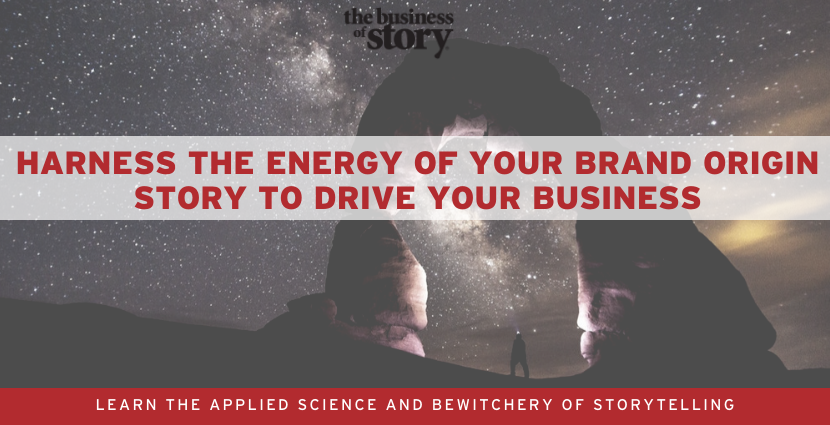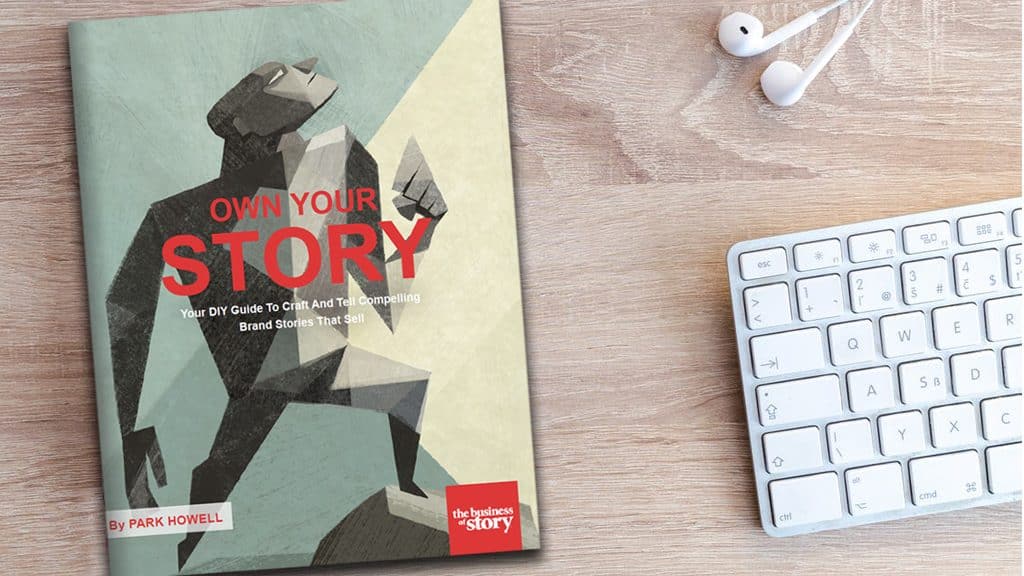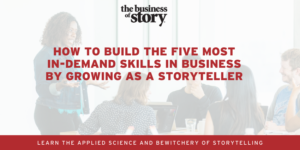Storytelling is one of the most powerful, yet underutilized, forces to grow your brand, business and people
Don’t you just love a good story? It has the power to transport you anywhere.
Business leaders like Phil Night, Steve Jobs and Sir Richard Branson have used epic brand storytelling to grow their organizations and their people. But others, including Papa John’s founder John Schnatter, Volkswagen’s ex-CEO Martin Winterkorn, and Hobby Lobby’s Steven Green, teeter on the event horizons of story black holes they’ve authored through their actions.
But given the obvious power polarity of storytelling, the majority of business leaders don’t appreciate the immense energy stories contain, which when released can either expand or contract their enterprises with a big bang.
So it’s worth examining storytelling at its cellular level to reveal why it is such a natural force in business today, and how you can leverage its might to propel the evolution of your organization.
The origin story’s big bang
For Father’s Day, my wife Michele gave me David Christian’s new book, Origin Story: A Big History of Everything. Christian is the co-founder of the Big History Project, a super-charged online social studies program for middle and high schoolers that takes them from the Big Bang to where we are today in the Anthropocene era.
Michele heard Bill Gates recommend it and she thought I’d enjoy it given my orbit around most all things story. But at first glance, I thought, “Do I have time for this?”
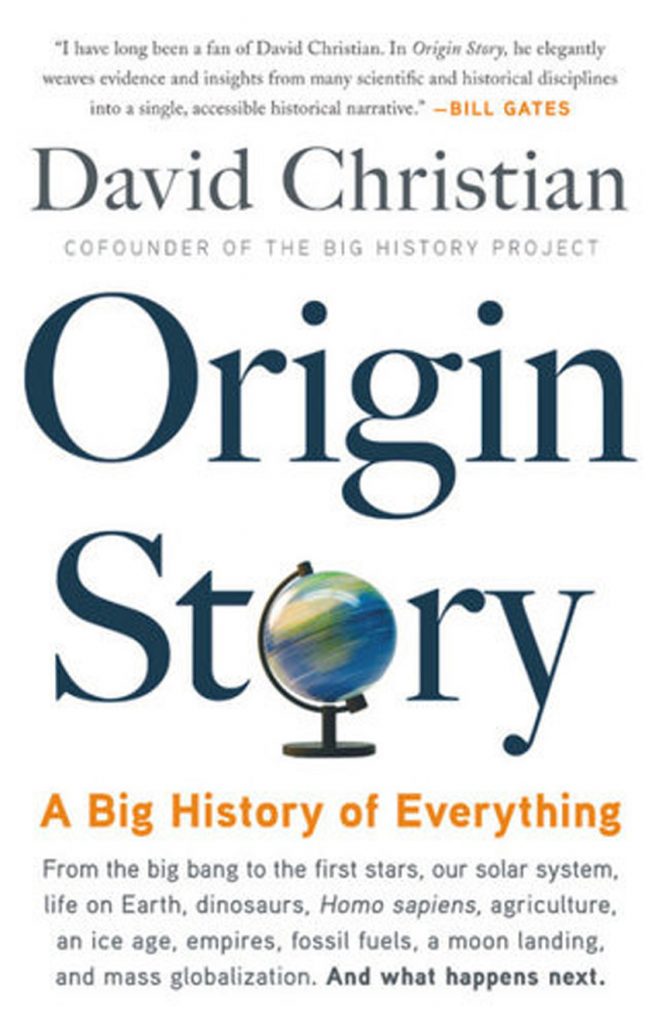
The description on the front cover said, “From the big bang to the first stars, our solar system, life on Earth, dinosaurs, Homo sapiens, agriculture, an ice age, empire, fossil fuels, a moon landing, and mass globalization and what happens next… all in just over 300 pages.”
So what did I do? I grabbed a Lumberyard Pale Ale and dove in.
Right off the bat, what Origin Story taught me was that I was paying more attention to Elisa Behrens in the 6th grade than our science teacher Mrs. Ring. I mean come on, did YOU know that our universe was created 13.8 billion years ago built on a cocktail of about 80 percent hydrogen and around 20 percent helium garnished with a few other elements?
Or that our origin story incorporates nine distinct evolutionary thresholds or chapters?
Or that in addition to the stratosphere, ionosphere, atmosphere and biosphere, we now live in a “noosphere,” a realm of mind, consciousness and relationships of our own making?
But my primary takeaway from the book is about energy and the positive and negative forces required for the evolution of our solar system, societies, and our selves. And I couldn’t help but marvel at the parallels between the forces that created our universe and the similar energy that is contained in and radiates from every well-told story.
Story as an organizing force
There are four kinds of forces that have created everything since the Big Bang. They are gravity, electromagnetic force and the strong and weak nuclear forces. Lose one of these foundational forces and voila, you have oblivion. There is a fifth energy source that scientists still don’t know much about, and it’s called dark energy. Dark energy appears to counteract gravity causing our universe to expand.
Christian writes, “We can think of energy as the potential for something to happen, the capacity to do things or change things.”
Sounds like what happens with a well-told story, doesn’t it? This idea is the foundation for my new thesis on the thermodynamics of storytelling, especially as it relates to your brand and business communications.
The second law of thermodynamics states that the natural tendency of things is to break down and approach a chaotic state. We experience this every day. Our bodies are a mass of quaking energy. If we don’t follow a healthy diet, exercise and take time off to rejuvenate, our bio-mass starts breaking down around us.
Believe me, at 57, I can see entropy’s bony hand clawing at my aging multi-cellular being right now.
If you don’t maintain your home or car, what happens? Entropy: the physical decay of the energy that created these structures in the first place. They fall apart.
The same can be said for relationships. You have to pay attention to and invest what Christian describes as Free Energy into your friendships, romance, family or colleagues to maintain these structures, or else the natural destructive forces of heat energy take over and entropy ensues. Your relationships deteriorate.
Storytelling and the informavore

He also talks about the third kind of being that we have evolved into. In addition to meat-loving carnivores, and plant-munching herbivores, we Homo Sapiens are now information-consuming informavores. In fact, it is our collective learning over the past few centuries – an eye twitch in the time of the universe – that makes us uniquely human. It is responsible for the rapid acceleration of our species both in understanding our natural world and our technical prowess to bend it to our will.
But are we breaking our biosphere? And do we have the smarts and will to fix it? This is the question Christian asks at the end of Origin Story.
My greatest aha moment that came from this book is thinking about story like everything else in our universe, as raw energy.
“We can think of energy as the potential for something to happen, the capacity to do things or change things.” – David Christian
We storytelling apes use the vivacity of story to attract people into our world. Connect with them in their worlds. Transport them to a new world of our choosing. And hopefully persuade them to be part of our tribe, our clan, our mission and share in our vision for the evolution of our organization.
But what are the atomic elements that make storytelling so universally seductive and persuasive?
The gravity of story
Storytelling is the nucleus of our collective learning, which makes up our noosphere, the sphere of human thought that is most apparent in the ubiquity of the internet. A great story has gravity that firmly plants you within its narrative field. Look no further than iconic brand stories that have brought the masses together including Nike’s Just do it, AirBnB’s Belong Anywhere, or Apple’s Think Different.
Vibrant storytelling illustrates our shared human condition, ignites our passions and creates collective meaning. Our brains naturally gravitate to descriptions of moments, events and experiences that teach us something about everything from primal survival to heady enlightenment. And they challenge us to be more, to think different and belong anywhere.
Ask Darwin, and he might say that storytelling was more important than our opposable thumbs to evolve us from cavemen to consumers.
The attraction of story
Story has a kind of electromagnetism that attracts and binds together even disparate minds through a shared cerebral experience. Take General Electric’s B2B story marketing, for instance. GE’s Chief Marketing Officer Linda Boff has created a “storytelling brand” to keep the colossus relevant and attract top talent through the suction of story.
Boff’s marketing team created an irreverent recruiting campaign called What’s the Matter with Owen? It used story marketing to tackle all of the anti-stories (anti-matter) as to why someone wouldn’t want to go to work with GE. The ROI on Owen’s story? The hysterical campaign attracted engineers and scientists increasing recruitment by 800 percent.
The winning formula at GE is a combination of idea-led creative, a critical storytelling element, being unexpected and “unapologetically ourselves,” according to Boff.
“We don’t sit around saying ‘how are we going to be cool today?” because if you work here you think the stuff we do is pretty damn cool. It’s locomotives, jet engines and wind turbines,” she said.
Story’s ability to connect and repel
When I took Robert McKee’s famous four-day course on screenwriting in L.A. called Story, one of the insights that interested me most was the positive and negative charges of scenes. McKee coached that if you start a scene on a positive note, then you should end it on a negative note, and vice versa. It creates a polarity that propels your story forward.
I found this positive/negative charge helps in presentations, too. Think of it like Nikola Tesla’s alternating current that toggles your attendees between emotional highs and lows to keep your presentation flowing. Your goal is to sweep them along in the current of your story.
Like our universe’s nuclear forces, powerful storytelling transports people using this same concept of strong and weak forces. Told well, your story uses positive and negative energy that pushes and pulls your audience through the experience that you are sharing in your anecdote, just as if they were there. This cognitive connection is happening in the noosphere: the sphere of human thought that has emerged from our collective learning.
As the noosphere has shown us, we discover through experiment, but we learn through experience. Stories share what we experience.
Examples of the compelling positive and negative forces can be seen in the Marine’s latest branding campaign, Battles Won. The campaign reframes its story, or re-educates us about what we believe it means to be a Marine.
“We develop quality citizens who keep our corps, our country and our communities side-by-side on the winning side,” this 30-second spot intones. “Not for glory, but for honor.”
Marine Corps Recruiting Command spokesman, Gunnery Sgt. Justin Kronenberg, said, “It is an all-encompassing brand idea that frames the chapters of our longer Marine Corps story in the context of a fight–fighting self-doubt to become a Marine; fighting our Nation’s battles; and fighting for what’s right in our communities.”
Internally, Storytelling in business is the atomic force behind your communications. I know, I know, you think your data, stats and facts are the story, but they’re not. Rather, think of your factual intelligence as the protons, neutrons and electrons of your messaging. But your story is the matter – the meaning – those informational elements create.
But most business communicators make the mistake of leading with data when it is the drama that we informavores seek. It’s the moments, events and experiences that your data is either reporting, supporting, monitoring, or attempting to predict that our human minds care about. Because events can kill us, data can’t. Experiences are raw energy expressed. Data is inert out of the context of the experience.
Story is your matter, and your data is the molecule that makes the matter, matter. So lead with the event horizon of your story, not its data elements, if you want to create an inescapable gravity within your presentations.
The wrong story, like dark energy, will repel your gravitational pull wreaking havoc and expanding chaos in your organization. These are unfortunate stories lived and told.
Examples include Papa John’s Pizza founder, John Schnatter, resigning over his idiotic use of the “N” word. Or when Chipotle suffered its E.coli outbreak because its core brand story seemed impossible to live into. Or one of the worst story blackholes in recent memory, Volkswagen’s emissions cheating scandal dubbed “Diesel Dupe.” Talk about being in the orbital clutches of a black hole.
Now you have experienced the powerful positive and negative energy forces of storytelling to expand or contract our universes. But what does it all mean?
The Thermodynamics of business storytelling
These concepts of fundamental natural energy coalesced in my mind. A Big Bang of an idea hit me out of nowhere, further underscoring to me the meta energy of the universe. I call it the Thermodynamics of Business Storytelling:
Story thwarts the fundamental law of interpersonal physics regarding the natural tendency of human relationships to approach a chaotic state, especially in organizations, because stories function like free energy structuring and shaping the molecules of meaning the human mind requires to fight the foe we fear most: entropy.
Think of people in an organization as diverse organic elements bouncing around and into one another. Say Sally in corporate communications is an oxygen atom vibrating around the office breathing life into the place with her communicative energy. Sally has a new idea for a campaign, but she can’t make anything of substance alone.
She invites Mike and Nancy from sales & marketing to bring their energy to the project. By the way, they’re both hydrogen atoms. Ironically, some might consider these two categories of professionals – communications and marketing & sales – gaseous. But, they connect their expertise to create a creative campaign. In our chemistry metaphor, the two elements of oxygen and hydrogen come together to create a third more powerful resource: water.
Oxygen and hydrogen atoms are bonded together in what is called a covalent bond by sharing electrons. The electrons that create covalent bonds in people are stories they tell each other. But as you have no doubt experienced, stories can either attract or repel us organic beings.
Let’s expand on this analogy. Say Sally, Mike and Nancy have had so much success creating the nucleus of this project that they want to get product development in the mix. But everyone knows these three departments don’t connect and communicate very well. So Sally, Mike and Nancy overcome this repulsion by sharing their emerging story of what could be in product sales.
Their narrative attracts six product dev. guys. We’ll call them carbon for their ability to form polymers (products). They bring their spark to the initiative, as do six more hydrogen people from sales and marketing. Sally, who started this chain reaction with her Big Bang of an idea, invites five more from her comms. team to balance out the workgroup.
In our chemistry model, the physical elements of people now number C6, H8, O6, and form a Vitamin C molecule. They were all attracted to and connected by the same covalent bond of an attractive sales & marketing story; a narrative they can all live into and prosper from for their own personal fulfillment and the health of the enterprise. Which appears more like an organism now than an organization.
Creating the Goldilocks conditions for your storytelling culture
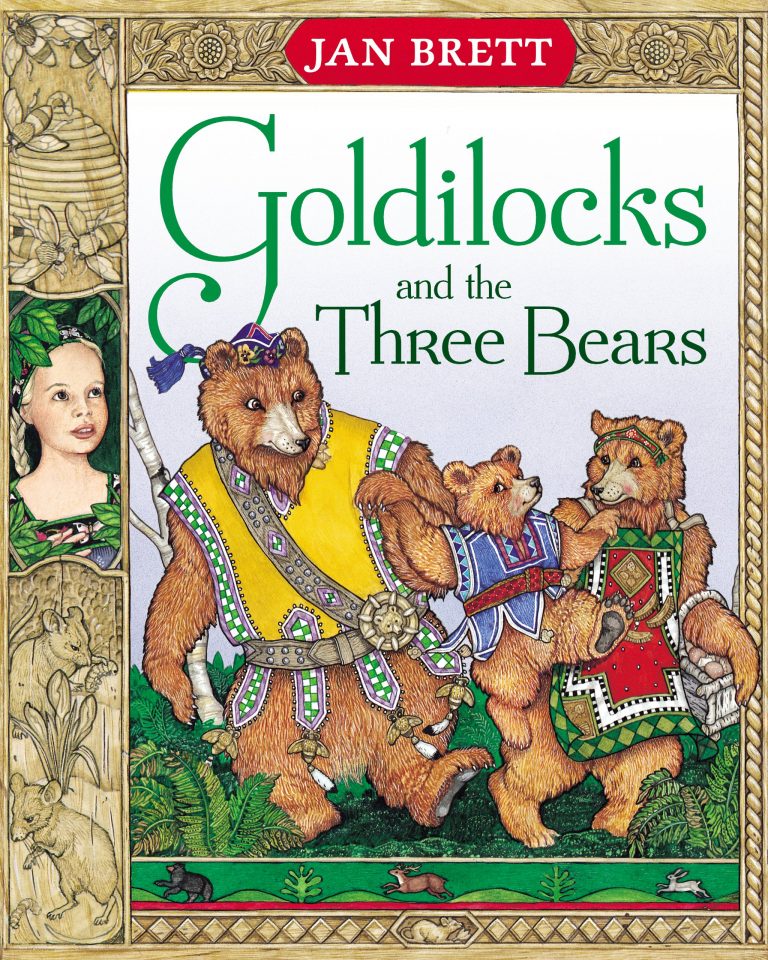 In Origin Story, Christian talks about the “Goldilocks Conditions” required to form Earth: Not too close to the sun, not too far, but just right. Since the children’s story of Goldilocks and the Three Bears is well known across cultures, the concept of “just the right amount” is easily understood and applied to a wide range of disciplines, including developmental psychology, biology, astronomy, economics and engineering. This is yet another example of how we use metaphorical storytelling as a covalent bond to create meaning out of the complexity of life.
In Origin Story, Christian talks about the “Goldilocks Conditions” required to form Earth: Not too close to the sun, not too far, but just right. Since the children’s story of Goldilocks and the Three Bears is well known across cultures, the concept of “just the right amount” is easily understood and applied to a wide range of disciplines, including developmental psychology, biology, astronomy, economics and engineering. This is yet another example of how we use metaphorical storytelling as a covalent bond to create meaning out of the complexity of life.
But often all of the wrong conditions are present to create a robust storytelling culture in an organization. These include the dark energy forces of ego-driven consolidation of power, ruling through fear, zero tolerance for failure, single-minded obsession, failure to learn from mistakes and the lack of a compelling mission and vision or at least the lack of communicating it.
Every one of these conditions entices entropy into your business. Relationships devolve into chaotic states. Your atmosphere is polluted by egotism, fear and loathing. Your organization/organism coughs and spurts its way forward, if at all.
But here’s what you can do to create the just-right Goldilocks conditions to create a thriving storytelling culture. Start with your collective origin stories.
- First, get clear on what your origin story is, not by looking for some epic story, but by finding your scenes: those elemental moments that have shaped who you are today. Find your scenes and your story will find you. Watch my TEDxGilbert Talk and I’ll show you how.
- Encourage your leadership, staff and employees to create their own origin stories by first finding their scenes that have shaped their beliefs, values and purpose. Just ask them to describe…
• That time when something suddenly piqued your curiosity and you had to dive into it headlong.
• That time when a seemingly insignificant moment surprisingly became a major turning point for you.
• That time when you did something you thought you couldn’t. - Define the origin story for your brand and share it with your team
• Describe the moment – your Big Bang – when and why you knew your brand must be born
• Define what you had to overcome to evolve your brand to where it is today
• Share your quest story as to where your brand is headed
• Ask your team to consider how their individual origin stories connect their beliefs and values with your overall brand narrative
If you have yet to form the nucleus of your brand story, I can help there, too. Download the DIY Brand Story Strategy workbook and connect the 10 fundamental story elements of the proven Story Cycle System™ to shape and activate the physical energy of your brand story.
Or you can hire me to guide the process. Together we’ll create the Goldilocks conditions to clarify your story, amplify your impact and simplify your life.
And the great thing is, it won’t take you 13.8 billion years to become a force in the universe.

